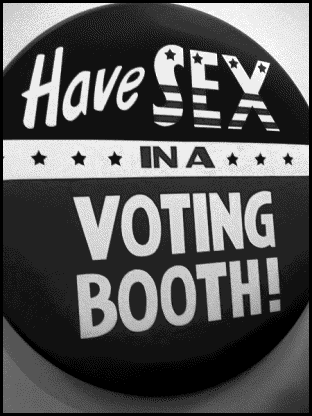The Dark Arts of Mathematical Deception
Charles Seife
(Viking)

And, says Seife, the votes weren't even close. They were all ties.
In Wisconsin, 2008, the newspapers had a field day; "The Republican incumbent held a slight edge, with a 192-vote lead over Democrat Franken." The lawyers had even more of a field day, since they were paid by the hour to gum the process as much as possible. But they could never beat out the voters: "There were flying spaghetti monsters and Mickey Mice, ballots that had been initialed, stamped, and scrawled on in every conceivable way."
- There were dark circles that were nowhere near any blank ovals intended to received the votes. A handful of votings marks had been placed with almost laserlike precision directly midway between the Coleman and Franken ovals.
Seife points out the obvious. With a few million voters, there are always going to be a few nut cases making up what he calls "pathological ballots." Even if the ballots are perfectly designed --- forget the butterfly ballot --- even when the voting officials are as careful as can be, there must be "interpretation errors, counting errors."
- These two sources of error alone would be enough to mask the true victor of an election that is as incredibly close as the Minnesota race was.
The Minnesota Secretary of state said that "Franken had won 1,212,629 votes to Coleman's 1,212,317 votes." The author calls this "disestimation."
- The proper thing to say was that both Franken and Coleman had each received approximately 1,212,000 votes.
In other words, in both in Florida 2000 and Wisconsin 2008, the right phrase is "a tie," to be settled with a coin-flip. Even perfectly laid-out elections cannot be faultless because of the "fallacy of the exact count."
He takes his arguments with numbers in other areas during the course of this book, including a study of some of Gore's improbable figures on global warming, the chance of our dying in a commercial airline flight, and an examination of the conclusion of a Finnish study that said that women who had abortions have a higher risk of suicide than those who don't.
Well, yes: but the same study found that women who had had an abortion "had a higher chance of being murdered ... and were 4.4 times more likely to die in an accident." Perhaps, he thinks,
- Mentally ill people, risk-takers, women who run with a wild crowd [are] more likely to get into trouble of all sorts, including having an unwanted pregnancy.
The great-grandfather of this volume was called How to Lie with Statistics. It was written by Darrell Huff, and was published in 1954. The thesis was "Correlation does not imply causation." Proofiness is just as wise, and even more fun.